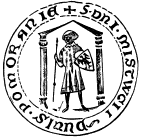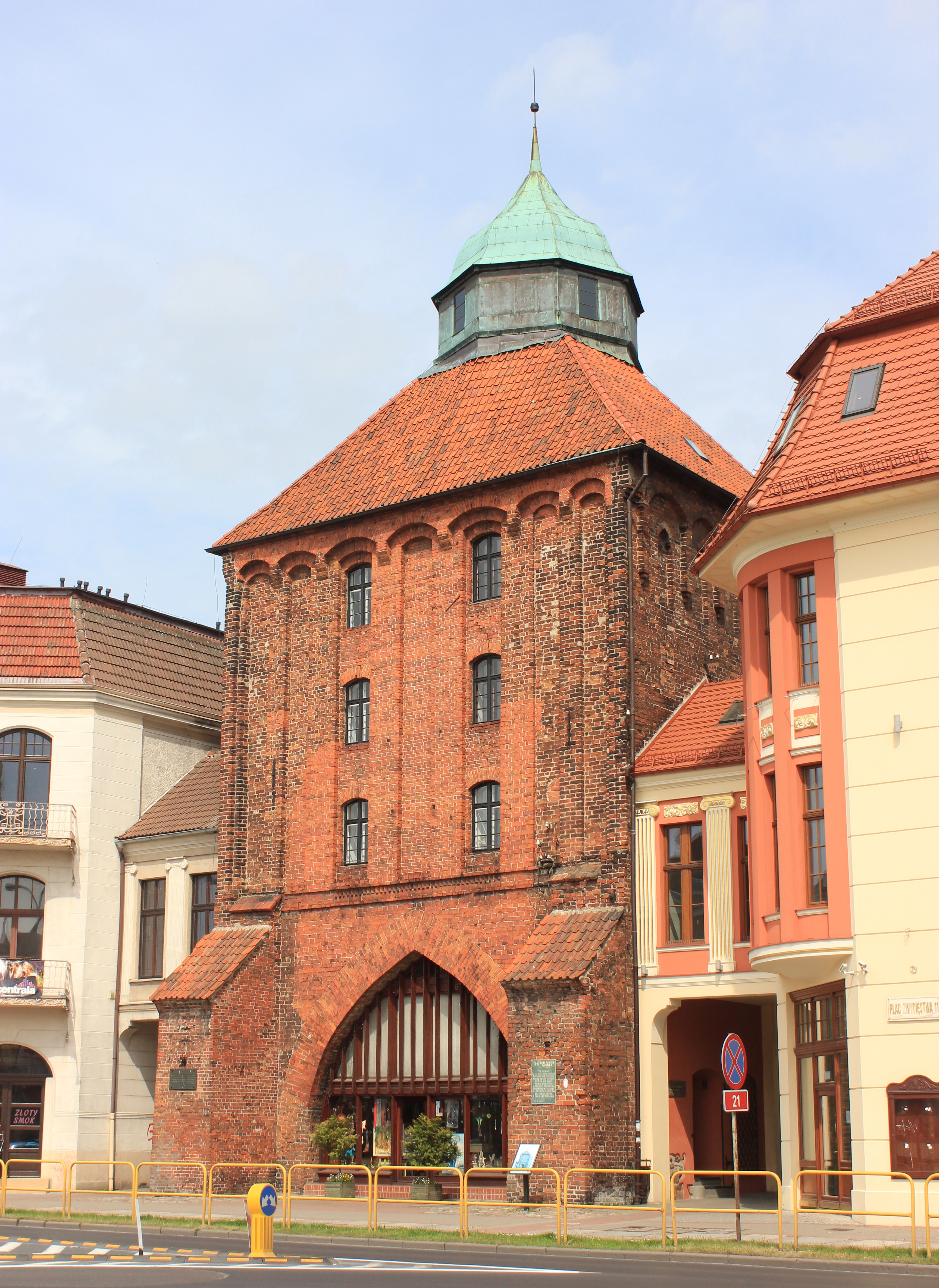|
Sulisława
Sulisława (died after 25 December 1294) was a daughter of Pomeranian knight. She was originally a nun in Słupsk, but in about 1285, she became the mistress of Mestwin II. On 26 August 1288, after his divorce from Euphrosyne of Opole Euphrosyne of Opole ( pl, Eufrozyna opolska) (1228/30 – 4 November 1292) was a daughter of Casimir I of Opole and his wife Viola, Duchess of Opole. She was a member of the House of Piast and became Duchess of Kuyavia from her first marriage an ..., Mestwin married Sulisława. Sources *B. Śliwiński ''Poczet książąt gdańskich'', Gdańsk 2006, s. 53 *B. Śliwiński ''Kronikarskie niedyskrecje, czyli życie prywatne Piastów'', Gdańsk 2004, s. 76-77 13th-century births 1288 deaths Mistresses of Polish royalty {{Christianity-bio-stub ... [...More Info...] [...Related Items...] OR: [Wikipedia] [Google] [Baidu] |
Mestwin II, Duke Of Pomerania
Mestwin II ( pl, Mściwój II or ''Mszczuj II'') ( 1220 – December 25, 1294) was a Duke of Pomerelia, member of the Samborides dynasty. He ruled Pomerelia as a sole ruler from 1273 to 1294. Early life Mestwin II was the son of Swietopelk II and the Přemyslid dynasty princess Eufrozyna. As a young man, in 1243 he was taken into the Teutonic Order custody as a hostage, part of the ceasefire agreement between his father and the Order, but the Order did not keep their part of this agreement and failed to return Mestwin II who was held by them until 1248 (for some time in the Order castle in Austria) when finally released. Acquiring power Most likely upon returning from Teutonic Order captivity his father made Mestwin II the Duke of Świecie (Schwetz) province circa 1250, and upon his father's death he began his challenge against his younger brother for Gdańsk (Danzig) in 1266, starting the so-called Pomerelian Civil War that lasted until 1273. He fought his younger brother a ... [...More Info...] [...Related Items...] OR: [Wikipedia] [Google] [Baidu] |
Pomerania
Pomerania ( pl, Pomorze; german: Pommern; Kashubian: ''Pòmòrskô''; sv, Pommern) is a historical region on the southern shore of the Baltic Sea in Central Europe, split between Poland and Germany. The western part of Pomerania belongs to the German states of Mecklenburg-Western Pomerania and Brandenburg, while the eastern part belongs to the West Pomeranian, Pomeranian and Kuyavian-Pomeranian voivodeships of Poland. Its historical border in the west is the Mecklenburg-Western Pomeranian border '' Urstromtal'' which now constitutes the border between the Mecklenburgian and Pomeranian part of Mecklenburg-Western Pomerania, while it is bounded by the Vistula River in the east. The easternmost part of Pomerania is alternatively known as Pomerelia, consisting of four sub-regions: Kashubia inhabited by ethnic Kashubians, Kociewie, Tuchola Forest and Chełmno Land. Pomerania has a relatively low population density, with its largest cities being Gdańsk and Szczecin. Ou ... [...More Info...] [...Related Items...] OR: [Wikipedia] [Google] [Baidu] |
Knight
A knight is a person granted an honorary title of knighthood by a head of state (including the Pope) or representative for service to the monarch, the church or the country, especially in a military capacity. Knighthood finds origins in the Greek ''hippeis'' and ''hoplite'' (ἱππεῖς) and Roman '' eques'' and ''centurion'' of classical antiquity. In the Early Middle Ages in Europe, knighthood was conferred upon mounted warriors. During the High Middle Ages, knighthood was considered a class of lower nobility. By the Late Middle Ages, the rank had become associated with the ideals of chivalry, a code of conduct for the perfect courtly Christian warrior. Often, a knight was a vassal who served as an elite fighter or a bodyguard for a lord, with payment in the form of land holdings. The lords trusted the knights, who were skilled in battle on horseback. Knighthood in the Middle Ages was closely linked with horsemanship (and especially the joust) from its origins in the 12 ... [...More Info...] [...Related Items...] OR: [Wikipedia] [Google] [Baidu] |
Słupsk
Słupsk (; , ; formerly german: Stolp, ; also known by several alternative names) is a city with powiat rights located on the Słupia River in the Pomeranian Voivodeship in northern Poland, in the historical region of Pomerania or more specifically in its part known in contemporary Poland as Central Pomerania (''Pomorze Środkowe'') within the wider West Pomerania (''Pomorze Zachodnie''), while in Germany the corresponding area is known as East Pomerania (''Ostpommern'') within the wider Farther Pomerania (''Hinterpommern''). According to Statistics Poland, it has a population of 88,835 inhabitants while occupying , thus being one of the most densely populated cities in the country as of December 2021 . In addition, the city is the administrative seat of Słupsk County and the rural Gmina Słupsk, despite belonging to neither, while until 1999 it was the capital of Słupsk Voivodeship. Słupsk had its origins as a Pomeranian settlement in the early Middle Ages. In 1265 it wa ... [...More Info...] [...Related Items...] OR: [Wikipedia] [Google] [Baidu] |
Euphrosyne Of Opole
Euphrosyne of Opole ( pl, Eufrozyna opolska) (1228/30 – 4 November 1292) was a daughter of Casimir I of Opole and his wife Viola, Duchess of Opole. She was a member of the House of Piast and became Duchess of Kuyavia from her first marriage and Duchess of Pomerania from her second marriage. Family Euphrosyne's paternal grandparents were Mieszko I Tanglefoot and his wife Ludmilla, a disputed Bohemian princess from the Přemyslid dynasty. Mieszko was son of Władysław II the Exile, Duke of High Poland and his wife Agnes of Babenberg. Agnes was daughter of Leopold III, Margrave of Austria and his wife Agnes of Germany, who was a daughter of Henry IV, Holy Roman Emperor and his first wife Bertha of Savoy. Euphrosyne's maternal family are disputed. Some believe her mother, Viola was a Bulgarian princess, daughter of either Kaloyan of Bulgaria or his successor Boril of Bulgaria. Boril was married to a Cuman women named Anna. The historian J. Horwat put forward another hyp ... [...More Info...] [...Related Items...] OR: [Wikipedia] [Google] [Baidu] |
13th-century Births
The 13th century was the century which lasted from January 1, 1201 ( MCCI) through December 31, 1300 ( MCCC) in accordance with the Julian calendar. The Mongol Empire was founded by Genghis Khan, which stretched from Eastern Asia to Eastern Europe. The conquests of Hulagu Khan and other Mongol invasions changed the course of the Muslim world, most notably the Siege of Baghdad (1258), the destruction of the House of Wisdom and the weakening of the Mamluks and Rums which, according to historians, caused the decline of the Islamic Golden Age. Other Muslim powers such as the Mali Empire and Delhi Sultanate conquered large parts of West Africa and the Indian subcontinent, while Buddhism witnessed a decline through the conquest led by Bakhtiyar Khilji. The Southern Song dynasty would begin the century as a prosperous kingdom but would eventually be invaded and annexed into the Yuan dynasty of the Mongols. The Kamakura Shogunate of Japan would be invaded by the Mongols. Goryeo re ... [...More Info...] [...Related Items...] OR: [Wikipedia] [Google] [Baidu] |
1288 Deaths
1 (one, unit, unity) is a number representing a single or the only entity. 1 is also a numerical digit and represents a single unit of counting or measurement. For example, a line segment of ''unit length'' is a line segment of length 1. In conventions of sign where zero is considered neither positive nor negative, 1 is the first and smallest positive integer. It is also sometimes considered the first of the infinite sequence of natural numbers, followed by 2, although by other definitions 1 is the second natural number, following 0. The fundamental mathematical property of 1 is to be a multiplicative identity, meaning that any number multiplied by 1 equals the same number. Most if not all properties of 1 can be deduced from this. In advanced mathematics, a multiplicative identity is often denoted 1, even if it is not a number. 1 is by convention not considered a prime number; this was not universally accepted until the mid-20th century. Additionally, 1 is the ... [...More Info...] [...Related Items...] OR: [Wikipedia] [Google] [Baidu] |




